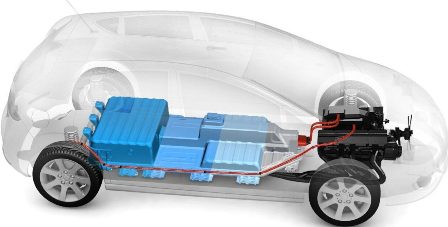The rapid penetration of electric vehicles (EVs) has led to questions on its most expensive component – the battery. What happens to the batteries after 8-10 years of service when they retire from EVs due to capacity fade?
[dropcap]V[/dropcap]olkswagen announced their ambitious target to build a million EVs by 2025 and has already got a plan for their used EV batteries. Earlier this year, Volkswagen unveiled its “power bank for the e-car”, a mobile rapid charger consisting of up to 360kWh second-life EV batteries that can charge up to four vehicles simultaneously.
 The second-life battery powered mobile charging stations provide a flexible and cost-efficient approach to the rapid expansion of the charging infrastructure, according to Volkswagen.
The second-life battery powered mobile charging stations provide a flexible and cost-efficient approach to the rapid expansion of the charging infrastructure, according to Volkswagen.
After 8 to 10 years of service in EVs, batteries are normally retired due to faded capacity and power that fail to meet the range requirement of electric vehicles. According to IDTechEx’s latest report on “Second-life Electric Vehicle Batteries 2020-2030”, there will be over 6 million battery packs retiring from electric vehicles per year by 2030. Recycling to extract raw materials from the spent batteries seems to be the default option. However, those used batteries could still retain up to 70-80% of the original capacity that can be further utilized in less-demanding applications such as stationary energy storage, before being recycled. Major OEMs and energy storage companies have launched various pilot and business initiatives to explore second-life applications for used EV batteries.
By 2030, second-life battery capacity will hit over 275GWh per year which presents huge opportunities for energy storage, according to the IDTechEx report. However, many technical, economic and regulatory challenges exist that might make it difficult for companies to profit from second-life batteries.
The report offers an in-depth analysis of key technologies, players, challenges and market opportunities across the second-life battery value chain. Based on conversations with global leading players in the second-life battery area, this report predicts the market size and analyses the major market trends of second-life batteries over the next decade.
Second-life batteries connect the electric vehicle and energy storage value chains. The potential value of second-life batteries is impacted by how the batteries are designed and used in their first life in the electric vehicles, how they are collected and used in second-life applications, and the value of recycling.
The value chain analysis in this report takes the lifecycle perspective to help stakeholders identify potential value opportunities. Key technical challenges are identified and companies that are developing technologies to improve second-life battery value are analysed. This report also presents a cost analysis and the potential pricing mechanisms for second-life batteries. Existing business models of battery second use are analysed, and how service-based business models could facilitate battery second use is discussed in the report, which helps companies reflect on their own business models to better seize the value opportunities provided by second-life batteries. For more detailed analysis of the second-life battery market, please see IDTechEx’s latest report on “Second-life Electric Vehicle Batteries 2020-2030”.
IDTechEx guides your strategic business decisions through its Research, Consultancy and Event products, helping you profit from emerging technologies.




